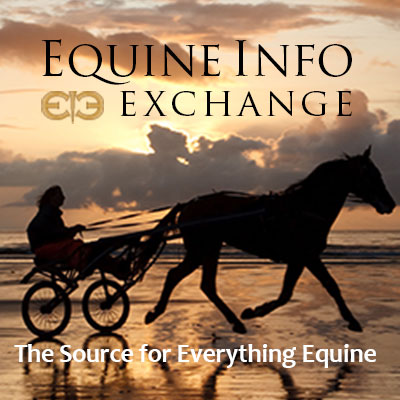
By Kentucky Equine Research Staff
It’s green; it’s grass; it’s good. This may be the approach of some horse owners when it comes to pasture forage, but savvy broodmare managers know differently.
One forage taunts broodmare managers in some parts of the United States so mercilessly that many consider it a weed, even a noxious one. In many ways, their assessment is just. Can you name the pasture plant?
Did you guess tall fescue, specifically toxic endophyte-infected tall fescue? If you did, you are correct!
Tall fescue (Festuca arundinacea) is a productive, persistent cool-season grass. Most existing stands of tall fescue in the United States occur in a particular region called the “Fescue Belt.” In the east, the Fescue Belt runs from mid-Georgia north to Pennsylvania, and to the west it runs from Oklahoma to Kansas.
In the case of tall fescue, a particular fungus (Neotyphodium coenophialum) called an endophyte grows within the plant between the plant cells. Because it proliferates internally, visible signs of the infection cannot be seen with the naked eye.
The endophyte concentrates in the seeds as well as plant parts closest to the ground. The predominant alkaloid, or by-product, of this endophyte, is ergovaline. Because pastures are dynamic, growing and receding with weather changes, ergovaline levels rise and fall during the year. Research has revealed that ergovaline generally peaks in May and September, but levels are high enough to cause problems in pregnant mares throughout much of the growing season.
In addition to pasture, mares consuming hay containing endophyte-infected tall fescue are susceptible to toxicity, as are mares that are bedded on similar hay.
If pregnant mares have access to endophyte-infected tall fescue, they are likely to show signs of tall fescue toxicity, characterized by prolonged gestation, difficulty foaling, thickened placenta (including premature separation of the placenta known as a “red bag” presentation), decreased or absence of milk production, weak or dead foals, and reduced breeding efficiency following parturition.
Plant breeders successfully extracted the endophyte from tall fescue, but it left the plant less vigorous. As it turns out, the endophyte gives tall fescue some of its most admired qualities, including top-drawer pest resistance and stress tolerance (drought, heat, grazing pressure). Because of this diminished persistence, endophyte-free tall fescue has little use in real-world pasture situations.
Most recently, plant breeders introduced novel or beneficial endophyte tall fescue. While these new varieties contain endophyte, it does not produce alkaloids, so it causes no toxicosis and has many advantageous characteristics, especially excellent persistence.
To determine the endophyte status of existing stands of tall fescue, laboratory testing is necessary. Consult a pasture specialist or university extension personnel for help with this.
While pasture renovation is the ideal solution to endophyte-infected tall fescue stands, other strategies can help keep mares safe. The primary mitigation strategy is removal of mares from toxic fescue 30-90 days before foaling. If no other grazing areas are available, revamp the diet to include high-quality hay or alternative forages (hay cubes, hay pellets, etc.) as the principal forage sources.
Oral administration of domperidone 10 to 20 days before expected foaling can prevent the signs of fescue toxicosis in pregnant mares. In one study, domperidone administered to 1,423 mares in the United States under veterinarian supervision and under field conditions was 95% effective in preventing signs of tall fescue toxicosis.
Image information: The highlighted area on the United States map shows the region where tall fescue is dominant and widely used in forage stands, and to which the term “Fescue Belt” typically applies (Ball et al., 2019). Within the blue square is a microscopic view of the tall fescue endophyte within the plant. Photograph by Carolyn Young, Ph.D., North Carolina State University.
*Poore, M. 2017. Tall fescue: Wonder grass or toxic curse. North Carolina State University Extension. Accessed February 3, 2025.
Other references:
Ball, D.M., G.D. Lacefield, and C.S. Hoveland. 2019. The wonder grass: The story of tall fescue in the United States. Oregon Tall Fescue Commission.
Roberts, C., and J. Andrae. 2022. Fescue toxicosis and management, 2nd ed. American Society of Agronomy, Inc., and Crop Science Society of America.
Reprinted courtesy of Kentucky Equine Research. Kentucky Equine Research is an international equine nutrition, research, and consultation company serving horse owners and the feed industry. Our goals are to advance the industry's knowledge of equine nutrition and exercise physiology, apply that knowledge to produce healthier, more athletic horses, and support the nutritional care of all horses throughout their lives. Learn more at Kentucky Equine Research.
There are more informative articles in our section on Health & Education. While you're here be sure to visit our Curated Amazon Store.

































